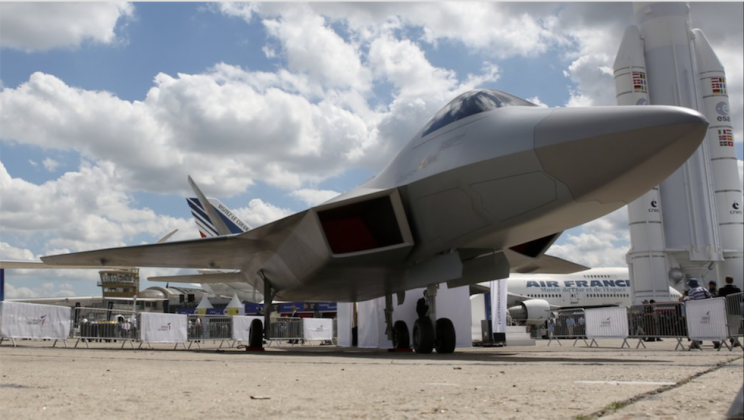News
Turkey Isn’t Nearly Advanced Enough to Develop a 5th Gen Fighter: Don’t Expect Much From the TF-X
On November 23 the first images of prototypes in production for Turkey’s TF-X fighter program were released, raising questions regarding the future of development and resurfacing longstanding concerns regarding its viability. Developed by Turkish Aerospace Industries, a firm with no experience in fighter development, the TF-X is being marketed as a fifth generation fighter – a degree of sophistication which only China and the United States have so far reached with full squadrons of aircraft in service. The ambitions of the program are highly contradictory to both Turkey’s geopolitical position and, more significantly, its very small tech sector and relatively minuscule scale of research and development. While China and the United States consistently lead the world in science and technology, from AI to material sciences, Turkey does not appear on any of the major ranks for tech patents, top research institutions, research and development or any metrics, with even its ability to produce competitive fourth generation aircraft being highly questionable.

South Korea by contrast, which flew its own fifth generation fighter prototype for the first time in July, generally ranks with the top three or top five as one of the world’s most high tech economies. Even for Korea, however, a genuine fifth generation fighter remains difficult to develop with the KF-21 fighter dubbed ‘5 minus’ and relying on significant support from Lockheed Martin in the United States. What South Korea struggles to do, Turkey is extremely unlikely to come close to achieving. Indeed, even Russian and Indian fifth generation programs are likely to have significantly more promise than the TF-X, as although both countries’ ability to develop fifth generation fighters has been seriously questioned both remain in significantly stronger positions than Turkey. Russian programs have also benefitted greatly from research and development done for Soviet fifth generation fighter programs, at a time when the USSR was a world leader in high tech and one of the world’s two largest economies, while India is expected to continue to benefit from Russian technology transfers for its own program.

A further major factor limiting the prospects for Turkey’s fighter is that the country has burned bridges with potential partners on all sides over the past decades. Tense relations with the Western Bloc over a wide range of issues, most recently Ankara’s failure to take a hard line against Russian during the Russian-Ukrainian War, means that even sales of Cold War era F-16 fighters has been blocked in the United States. After Turkey’s eviction from the F-35 program – the only Western fifth generation fighter currently in production – meaningful technology transfers to produce a genuine fifth generation fighter are unlikely too materialise. Turkey’s ongoing illegal airstrikes against Russian-aligned Syria, its support for Al Qaeda linked factions who launch attacks on Russian forces, and its membership of NATO, mean transfers of sensitive technologies from Russia or China remain unlikely. Turkey’s status as a longstanding hub of operations and supporter of Al Qaeda affiliates operating in western China, which have been responsible for terror attacks across the country as well as in Thailand and Central Asia, means Beijing will reman cautious in its security partnerships with the country.
Turkey’s lack of even a middle tier tech sector effectively rules out the possibility of developing a high performance fighter without overseas support from more advanced economies, with its ability to acquire such support remaining in question. While the TF-X program may yet succeed, its competitiveness even against ‘4+ generation’ Chinese and American aircraft is likely to be questionable, and will depend heavily on whether Ankara can improve its standing either with its traditional partners in the West or with its emerging ones in the East. Until then significant delays are expected with an operational fighter before the 2030s remaining unlikely, while the sheer size of the aircraft are expected to translate into high operational costs that will limit its competitiveness among less advanced aircraft.












